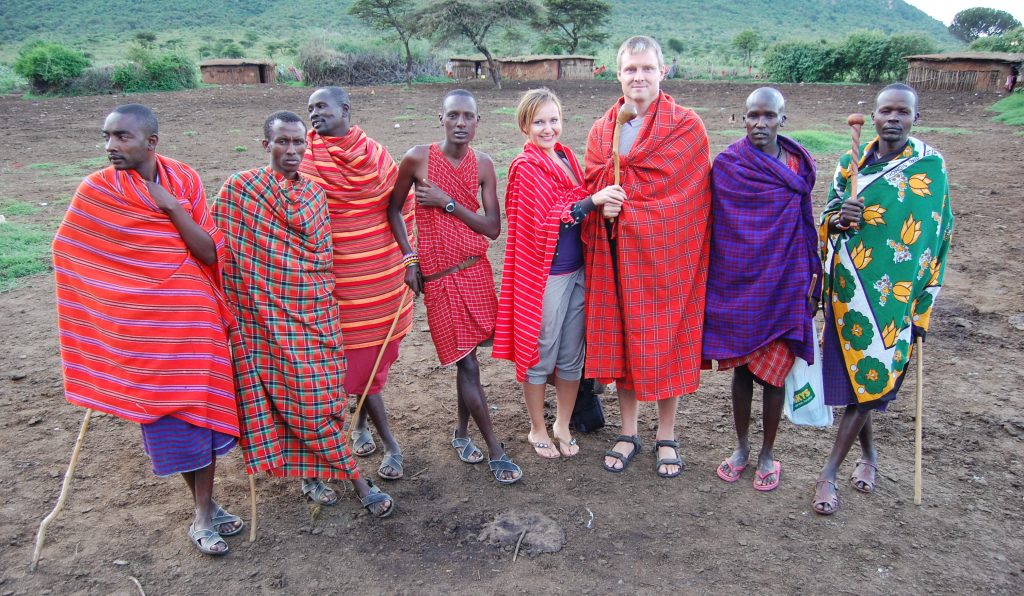The Maasai people live in East Africa dispersed throughout Northern Tanzania and Southern Kenya. They live off the land and lead a traditional semi-nomadic lifestyle.
However, due to global warming drought has become a common occurrence in East Africa. Therefore, cattle herds are smaller than they have ever been and the Maasai people are under pressure to adapt their lifestyle to modern conditions.
After our full day safari at Maasai Mara we visited a traditional Maasai village located near our lodge.

Maasai Tribe Diet
Traditionally Maasai tribe diet comes from their cattle and includes milk, meat and blood. They also make their own traditional beer and it is not uncommon for them to brew it in their own homes.
Typically, the blood from cattle is only consumed by the Maasai people on special occasions. Health benefits include being rich in protein and it also helps to strengthen the immune system. It is not distributed evenly among tribal members. Accordingly, it is only given to circumcised people, the sick and it is also consumed regularly by tribal elders.
However, due to dwindling cattle numbers the consumption of cow’s blood as Maasai tribe food is not as common as in prior years. In addition, some members of the Maasai tribe have begun to grow their own food. However, in Maasai culture farming the land is considered to be a crime against nature. This belief is based on the fact that the land cannot be used for grazing after it has been cultivated.
Traditional Maasai Village – Kraal
The traditional Maasai village is called a Kraal which consists of traditional Maasai houses arranged in circular fashion surrounded by a fence. Importantly, the livestock of the Kraal are brought inside the fence every evening to protect them from lions. The fence is constructed of acacia thorns to make it more effective. Young boys are responsible for herding the livestock.

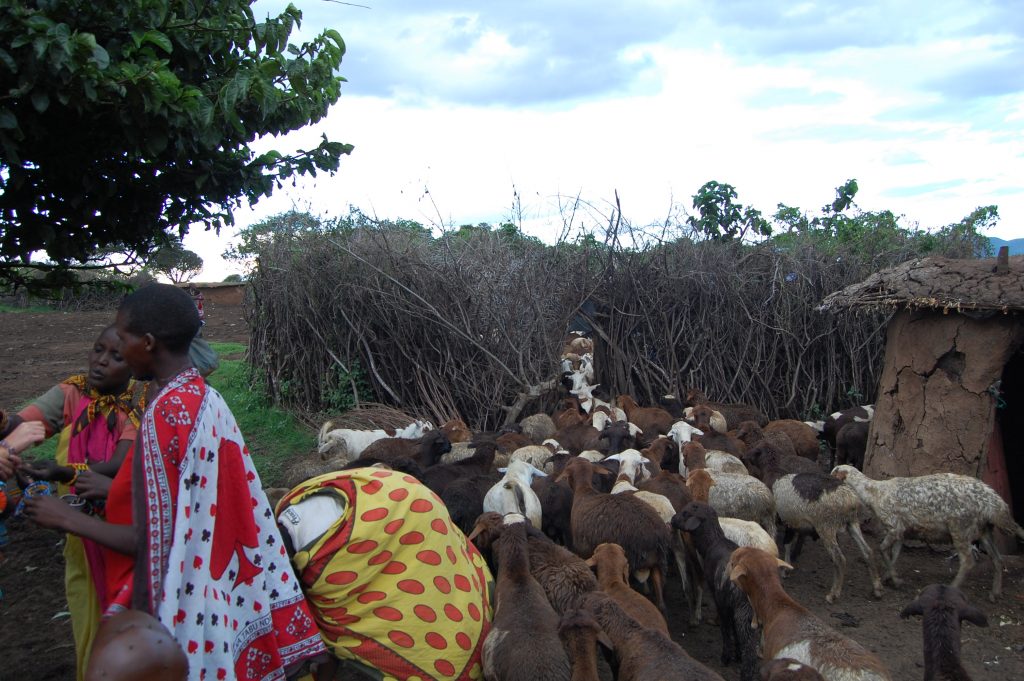
The Traditional Maasai Houses
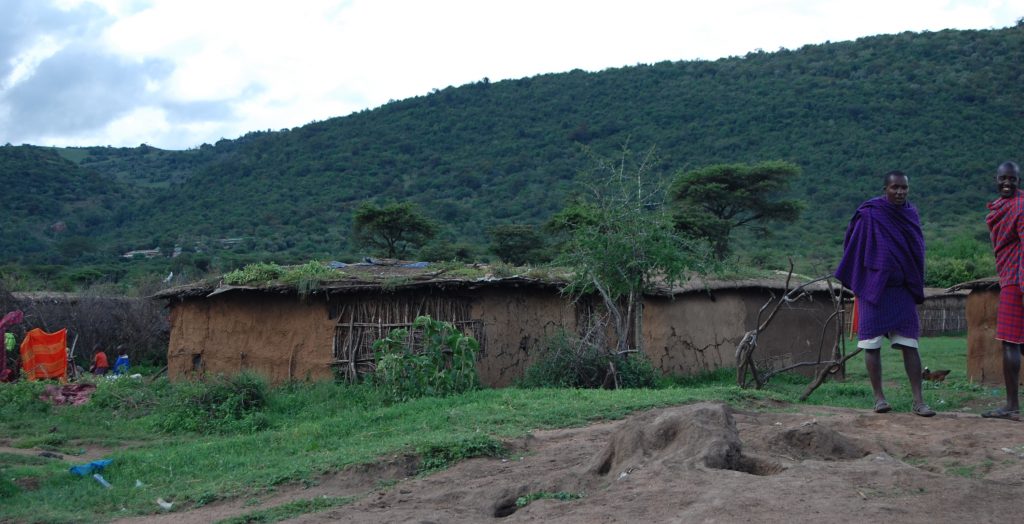
The Maasai houses are constructed using mud, grass, sticks, cow dung and cow urine. Traditionally, it is the responsibility of the women to construct the home and the men build the fence to protect the kraal.
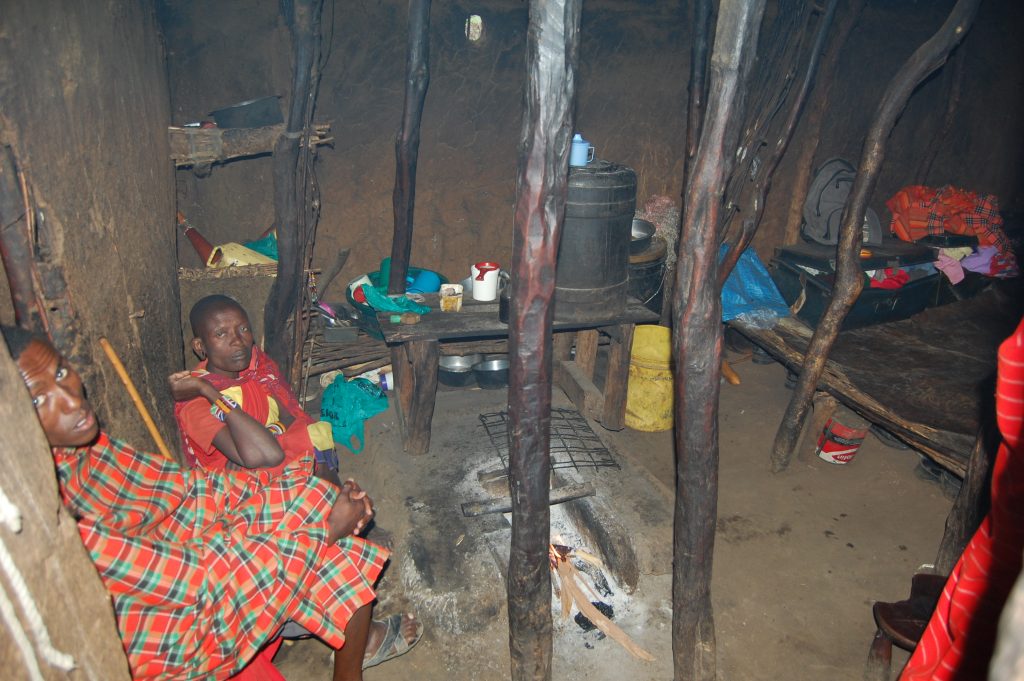
Adumu – Jumping Dance
The Maasai tribe jumping dance is called the “adumu”. This “jumping dance” of the Maasai people is preformed when the young male tribal members form a circle with one or two of them jumping in the center. Traditionally, it is assumed that the one who can jump the highest is the best warrior and will also be able to choose the most desirable bride.
Fortunately, we were able to try out the jumping dance and also get some insights into other important traditions of the tribe. After some encouragement I agreed to try my luck at the jumping dance.
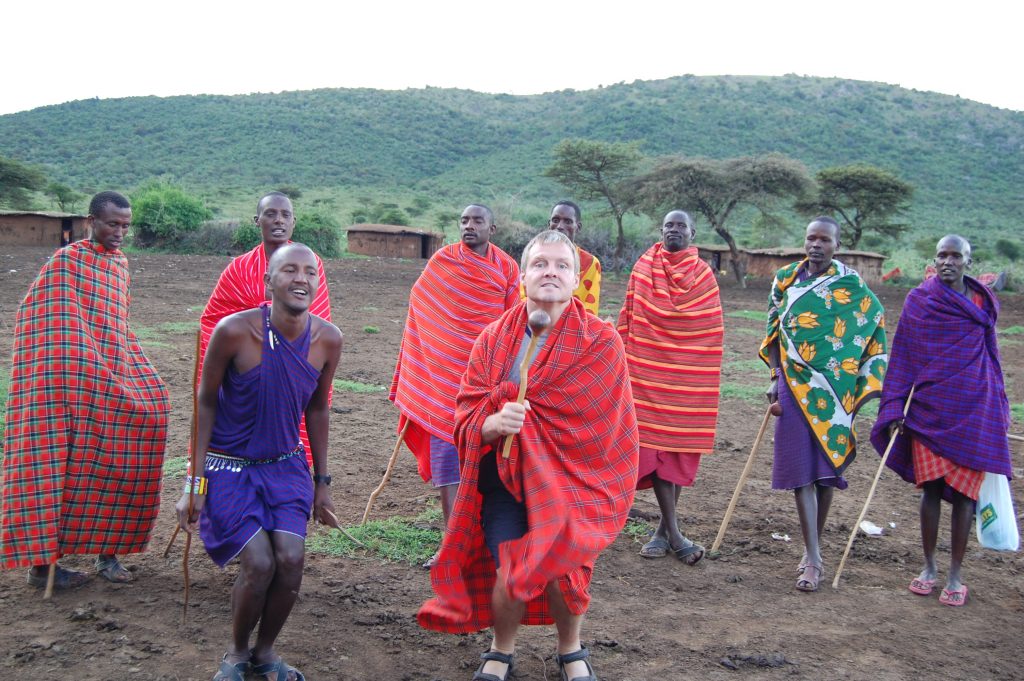
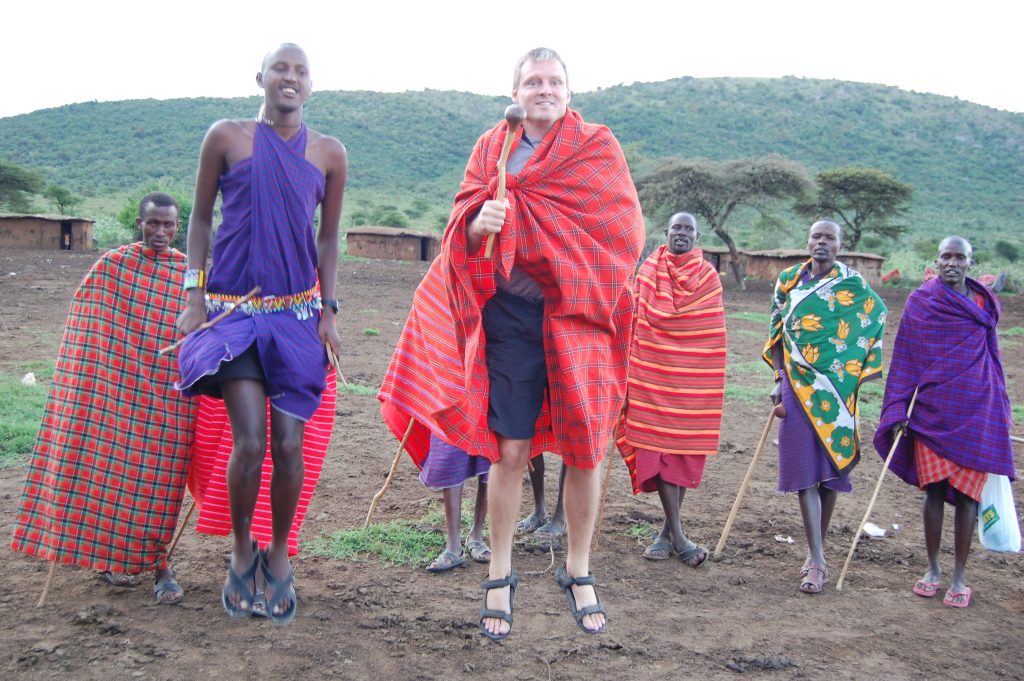
I think I did pretty well although he nudged me out by a few centimeters. However, I am not sure I was doing it correctly because my heels are supposed to be together and it is supposed to look effortless.
The Maasai People are Lion Hunters
Lion hunting is an important aspect of Maasai history in this area. Our host explained that they still hunt lions in his tribe. Although, they are not allowed to hunt inside the park, the lions can also be found near the village.
The lions are the traditional enemy of the Maasai people because the lions will kill their livestock if given the opportunity. Thus, killing a lion is the mark of a great Maasai warrior and it is a noble feat.
However, the hunters do not use guns instead they use spears to kill the lion. This is hard to believe although I do not have reason to doubt his word. Overall, my impression of them was that they were very dignified and proud of their traditions. He showed me the lion skin from the kill he made to achieve warrior status.
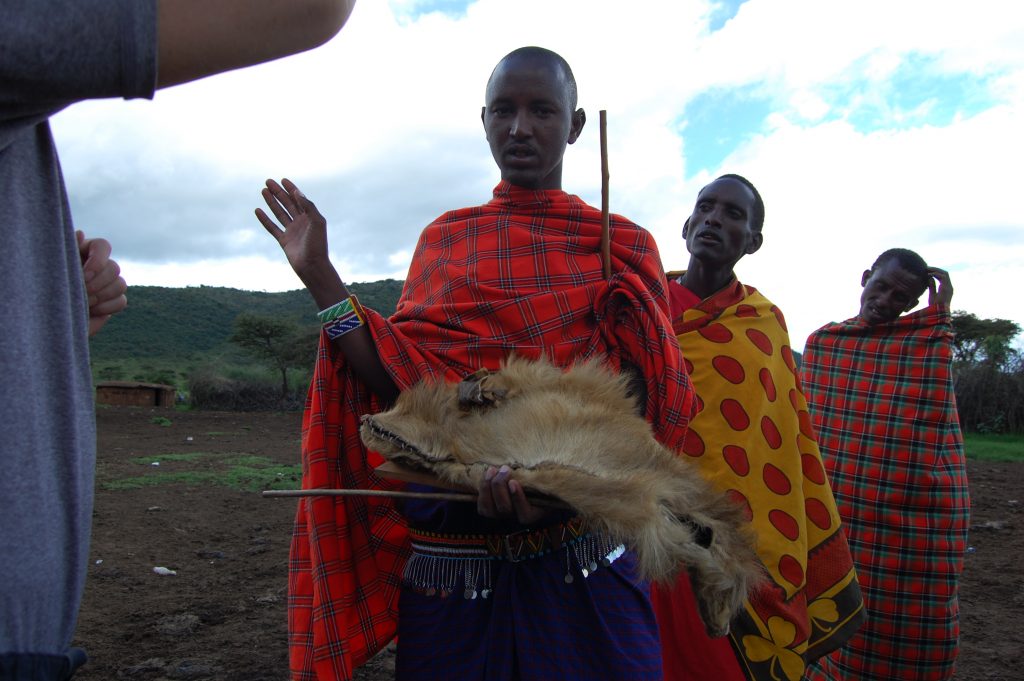
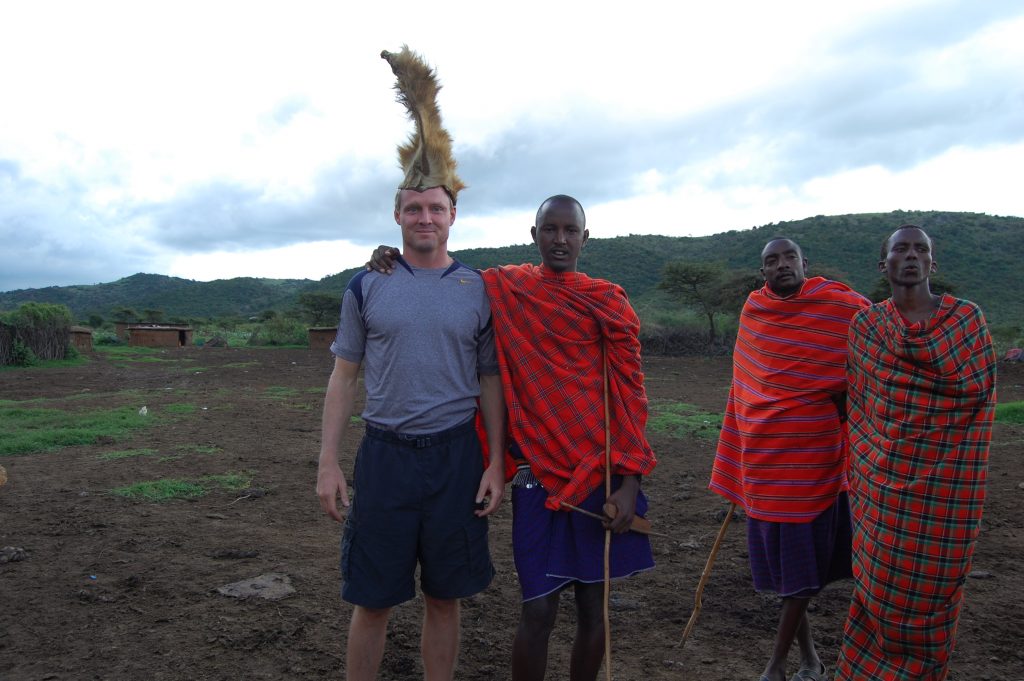
Primitive Fire Starting Methods of Maasai People
The Maasai people are still able to use primitive fire starting methods similar to the San Bushman in Namibia.
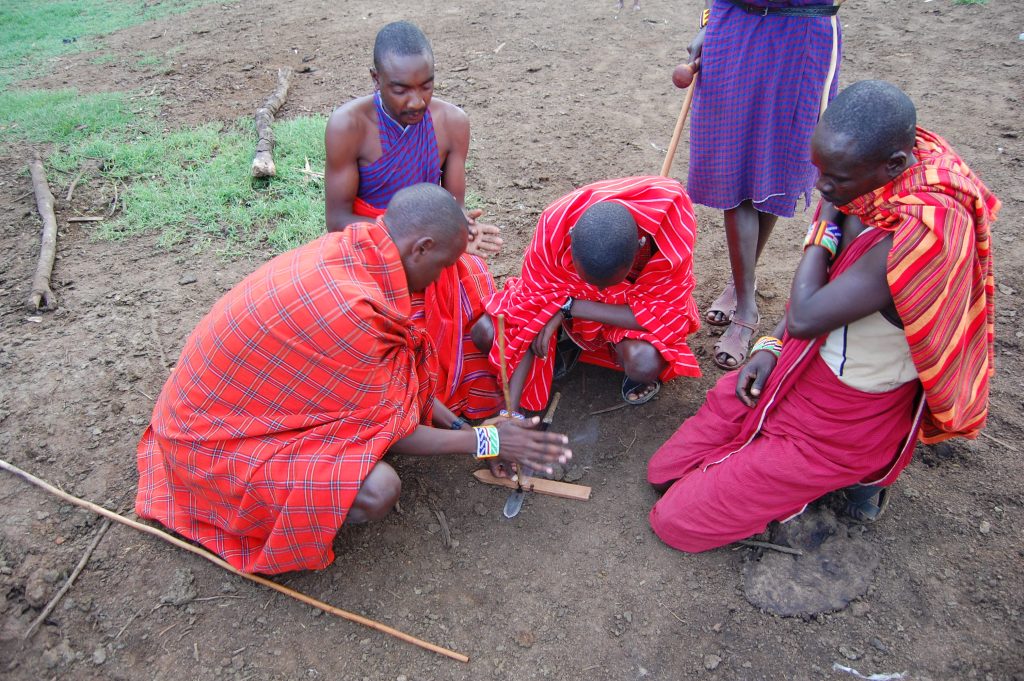
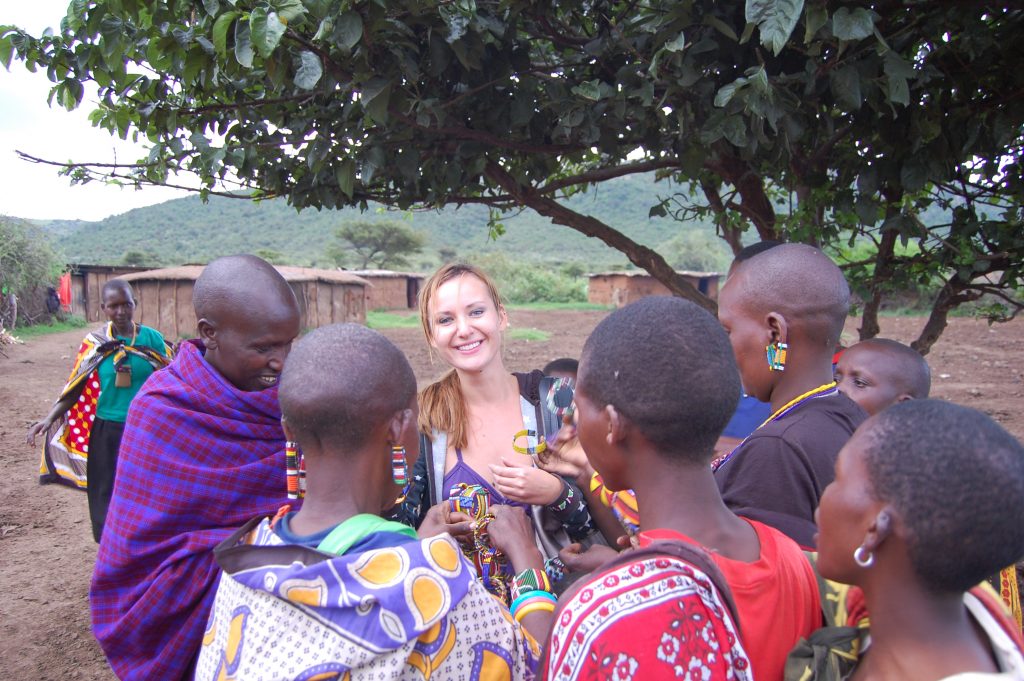
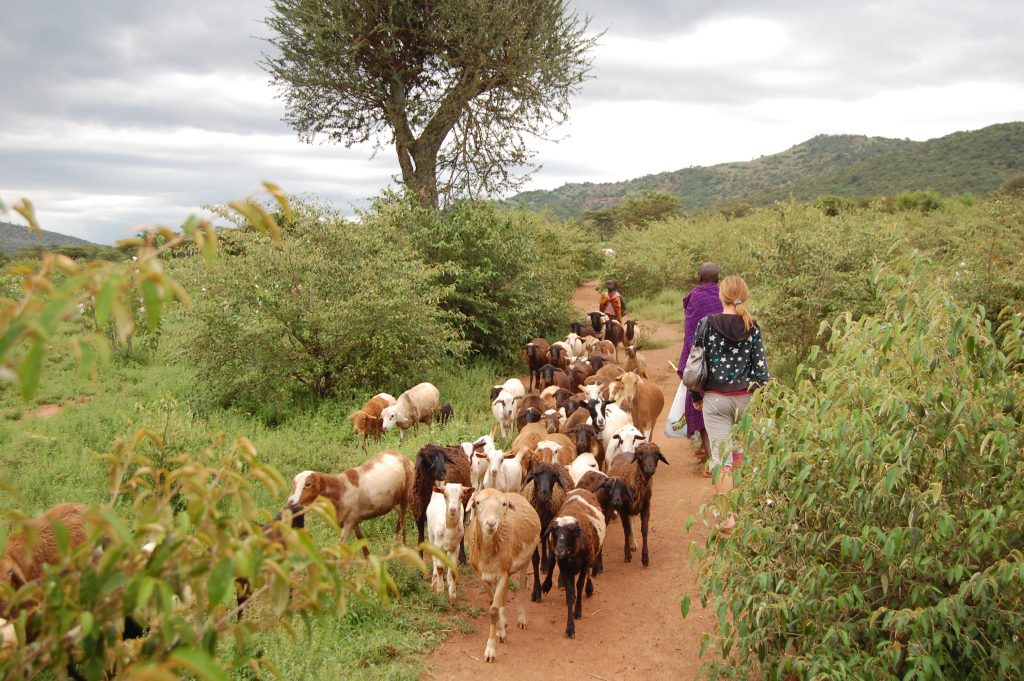
Proud Maasai People at Maasai Mara
As we parted ways I explained that we were going to Amboseli next. It sounded peculiar, but our host would then issue an adamant denial that his tribe was in any way similar to the Maasai people located near Mt Kilimanjaro. After getting acquainted with the other tribe I completely understood why he would not want to be mixed up with them.
Also, of note was that the Maasai people located at Maasai Mara were not carrying cell phones or any other tech gadgets which would make it appear that they were not 100% committed to their traditional Maasai history. This is something that I have in common with this Maasai tribe.
Although I was a bit skeptical of our hosts commitment to the traditional lifestyle. I asked him if he was given an opportunity to move to Nairobi and live in the suburbs – would he do it? The answer was an unequivocal NO.
